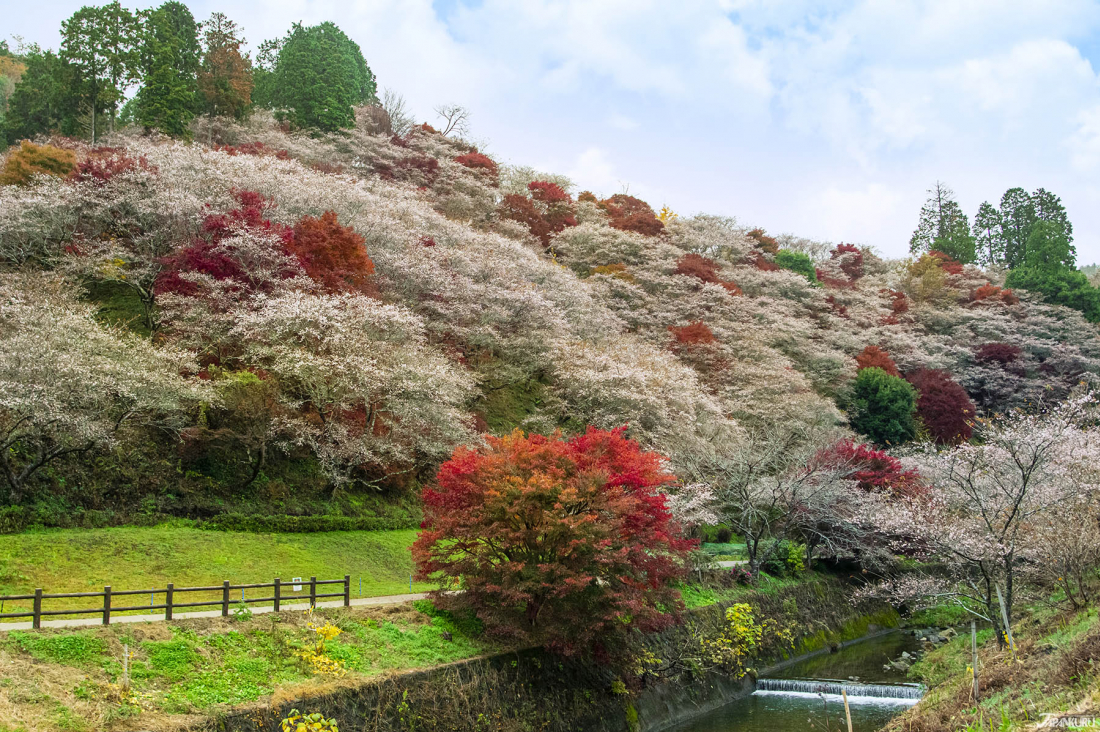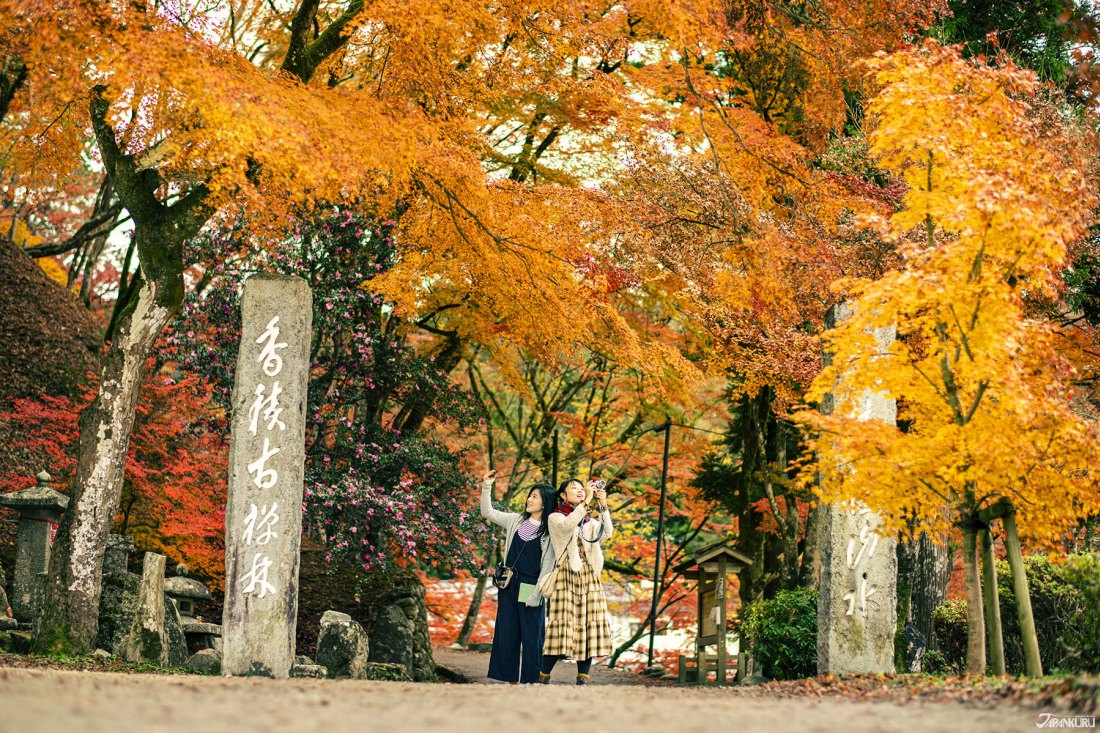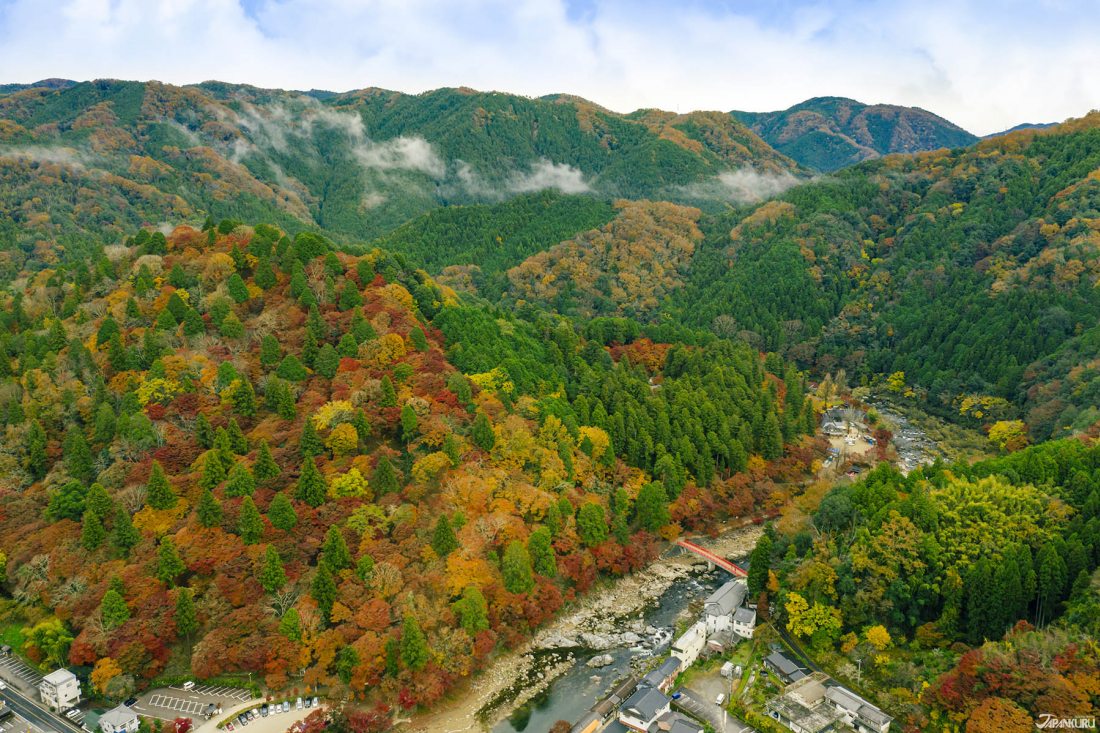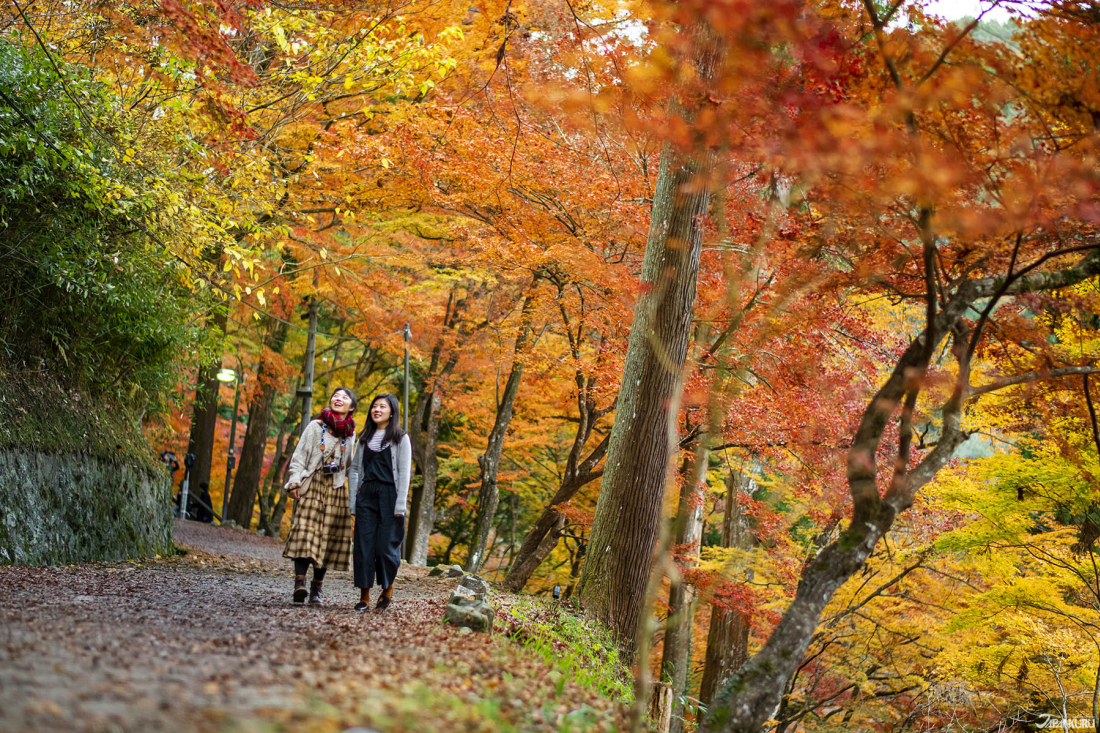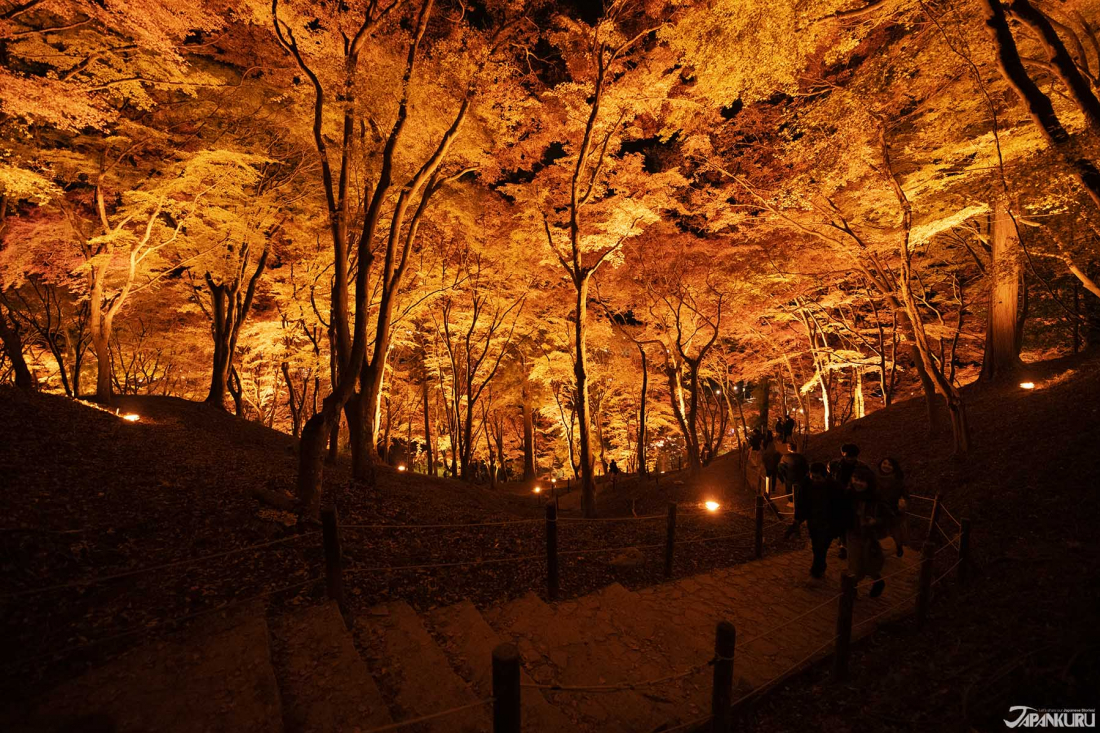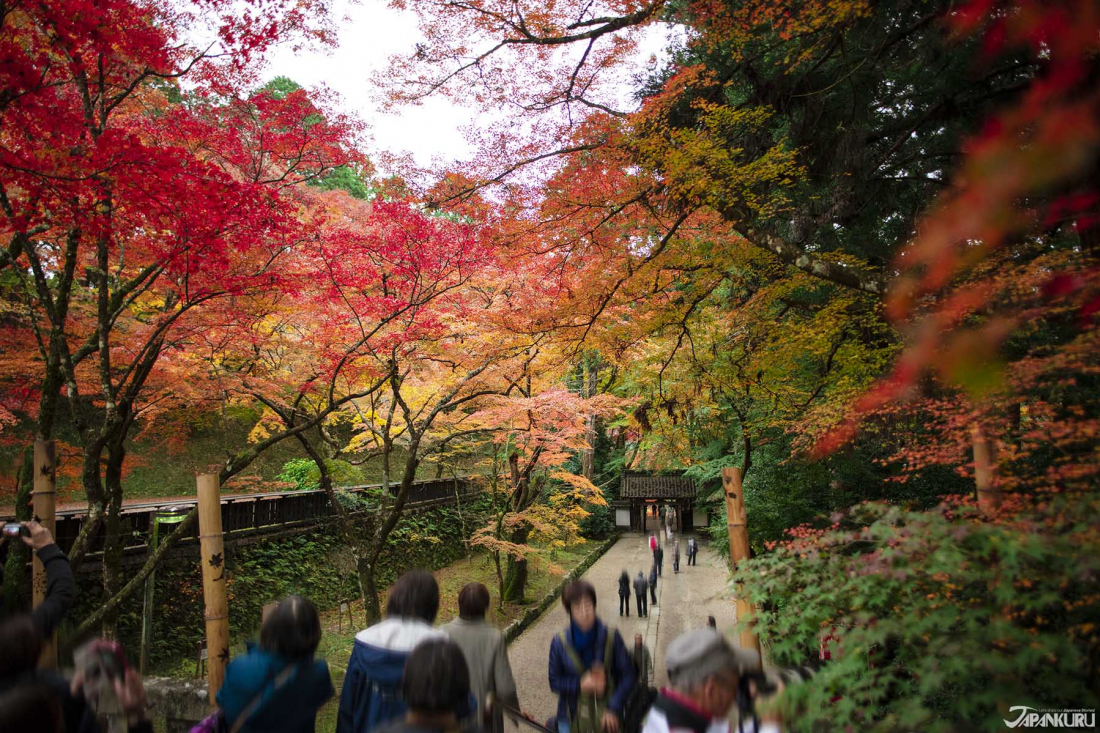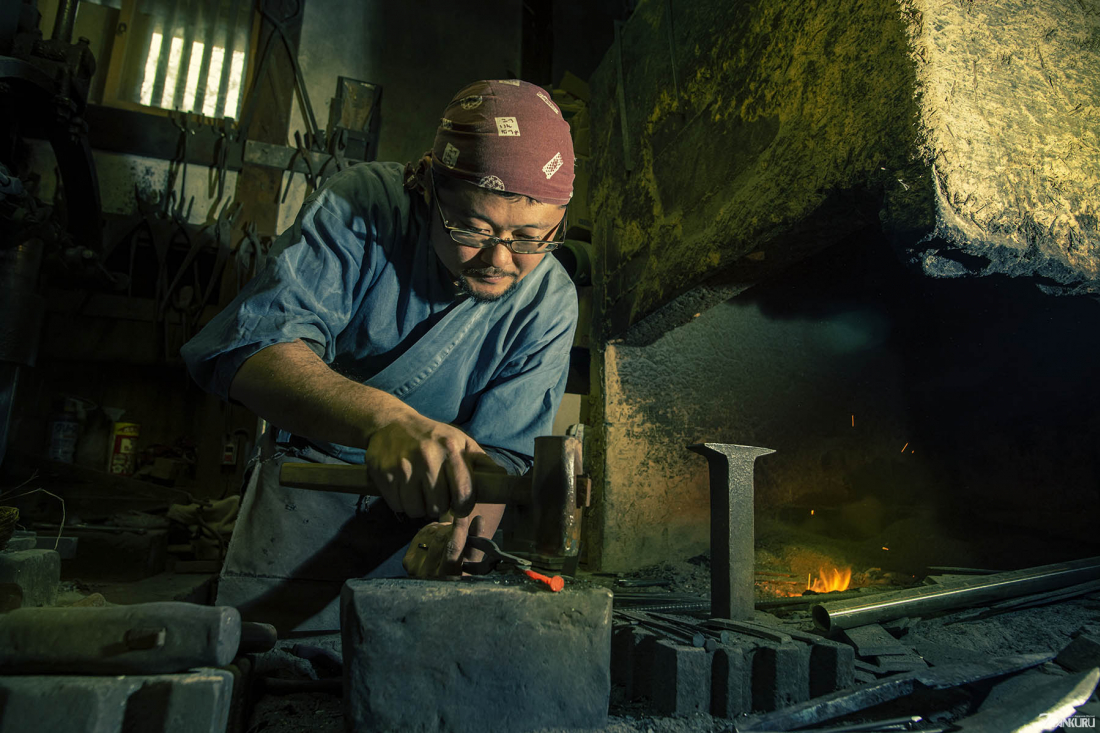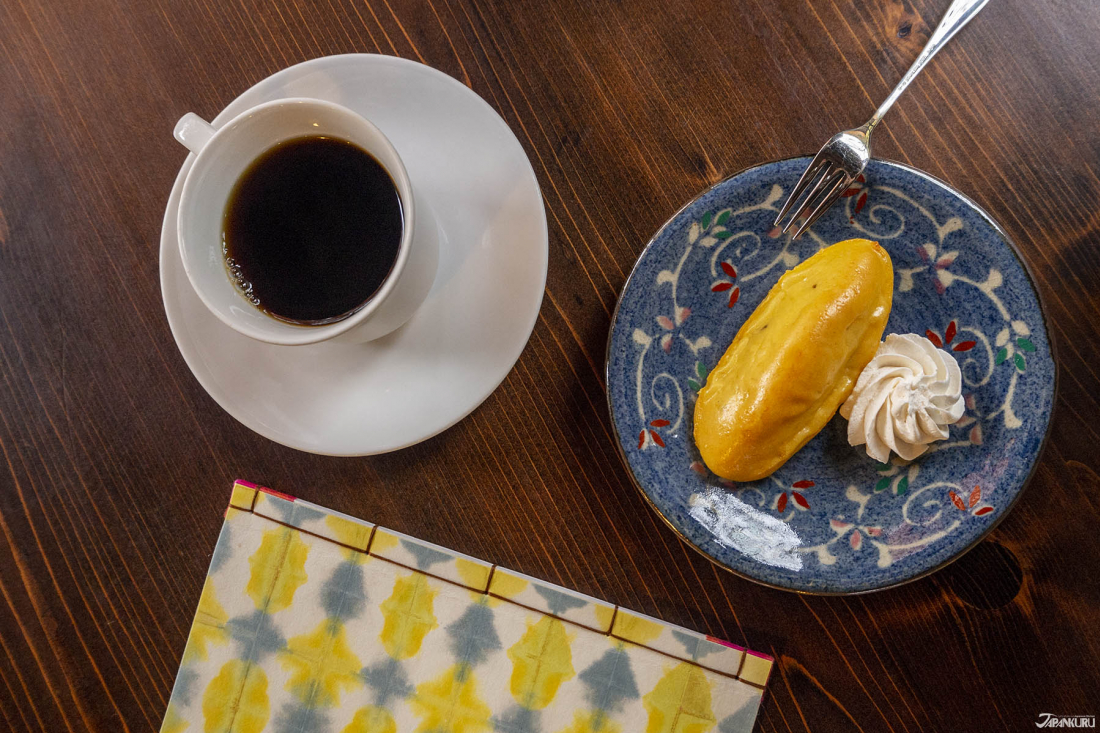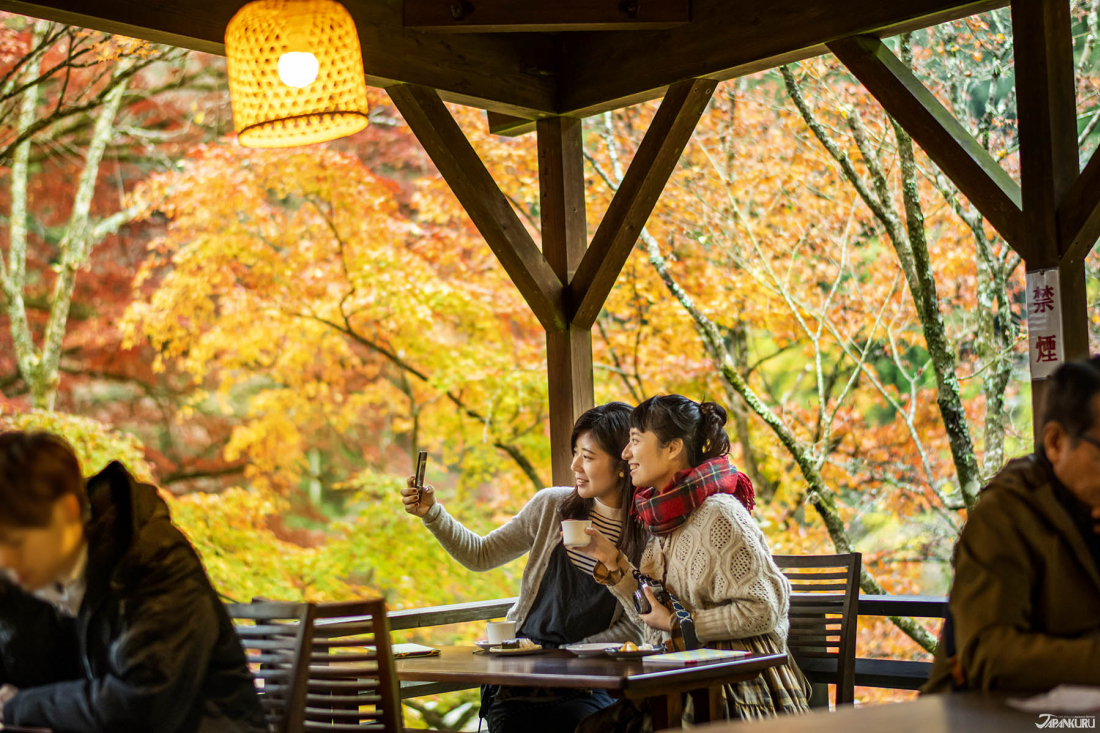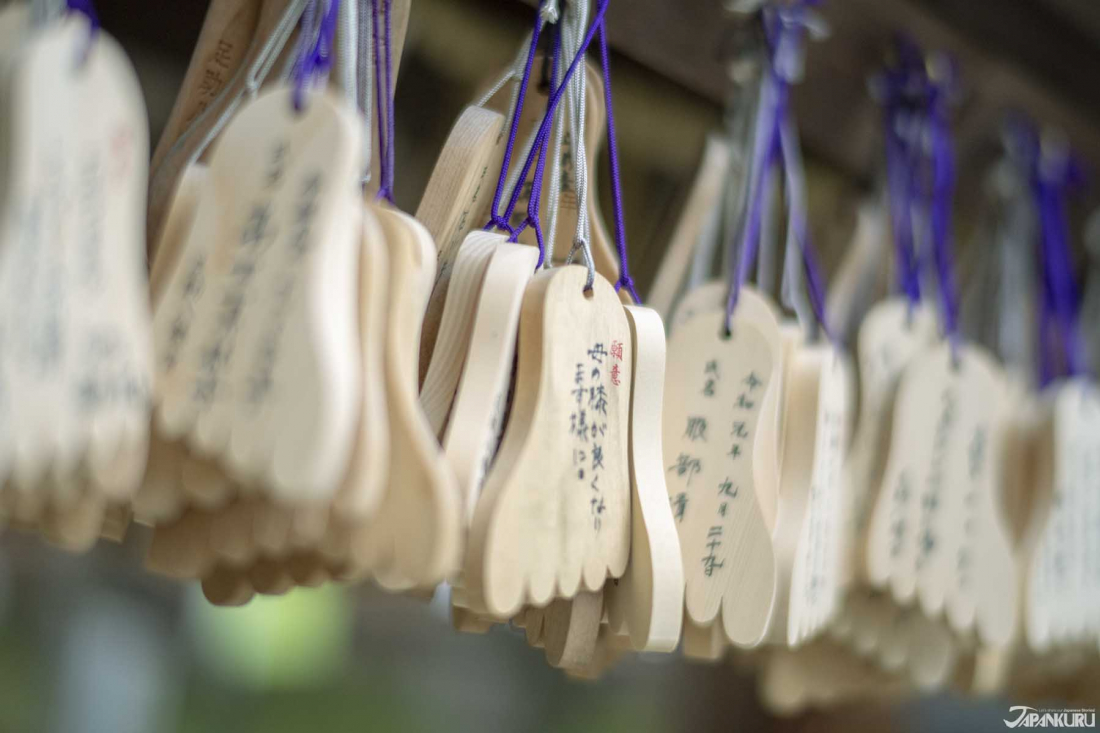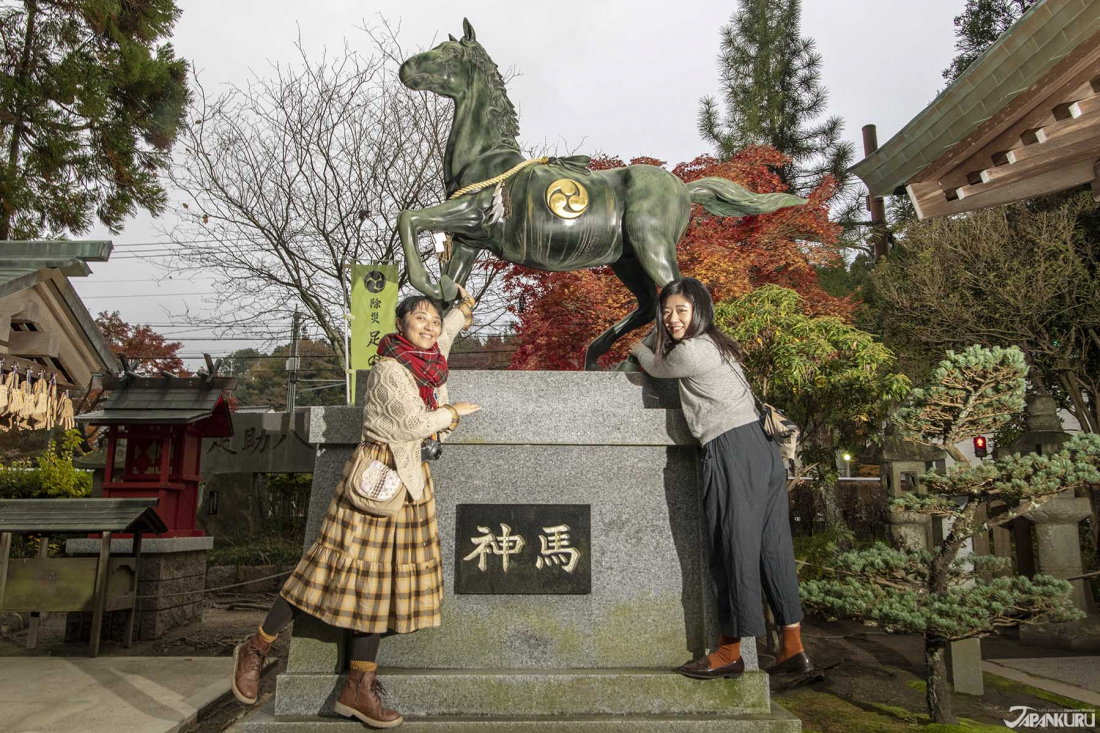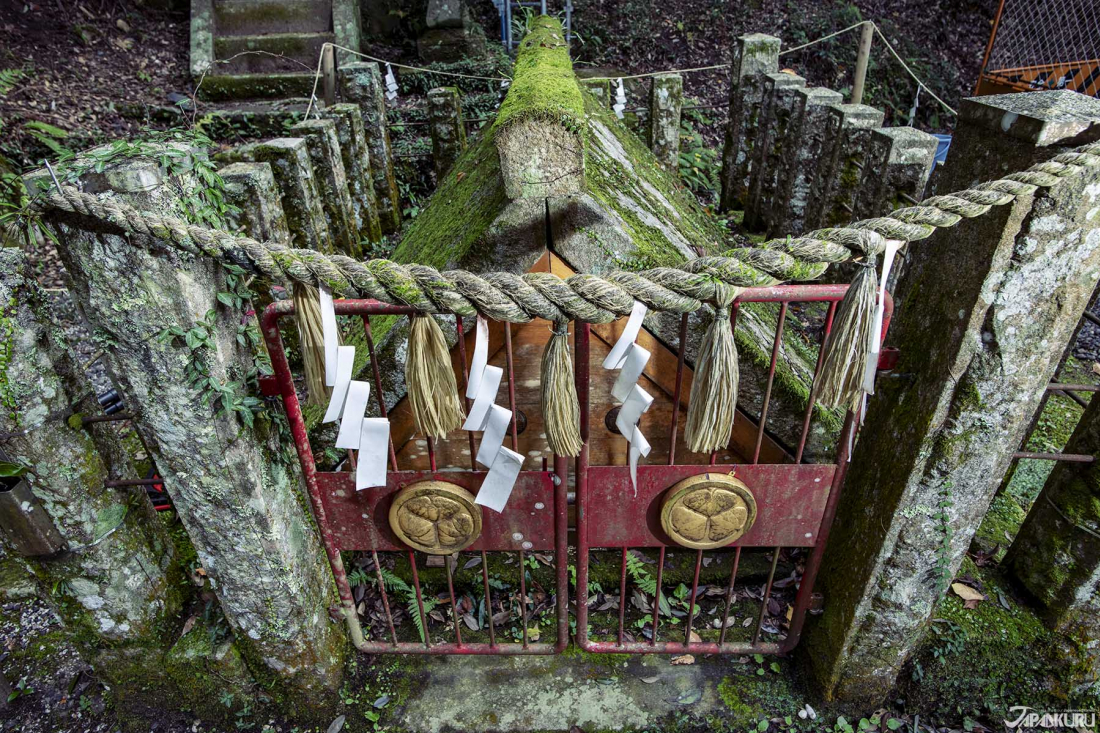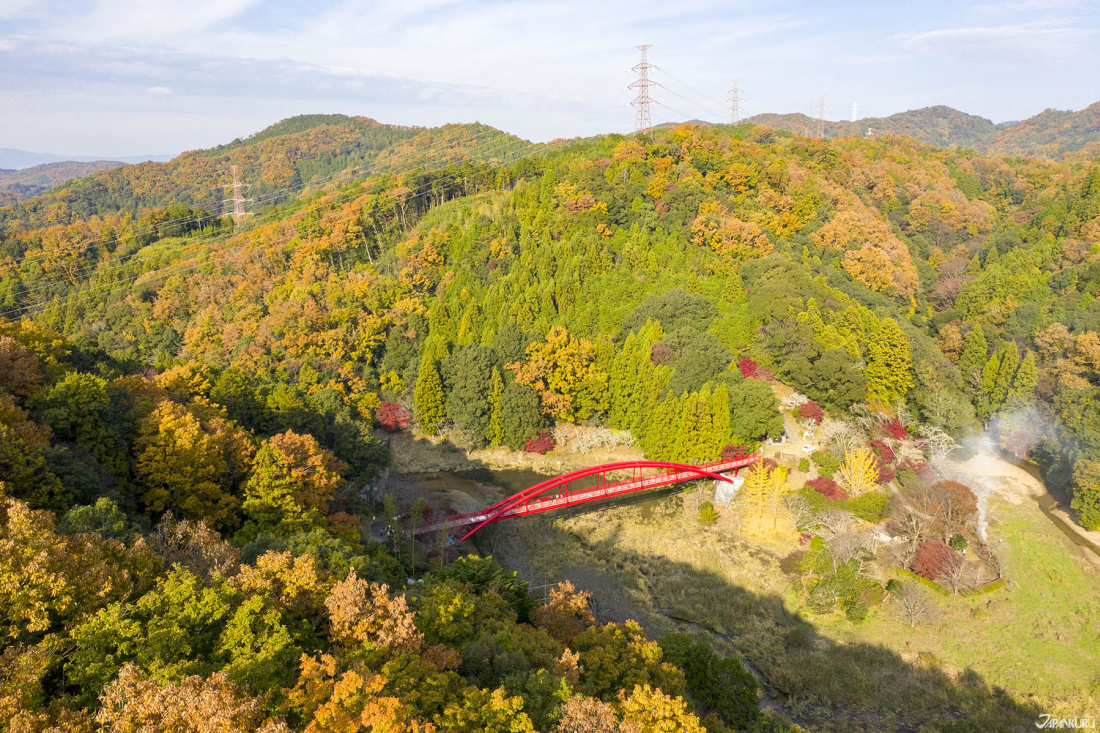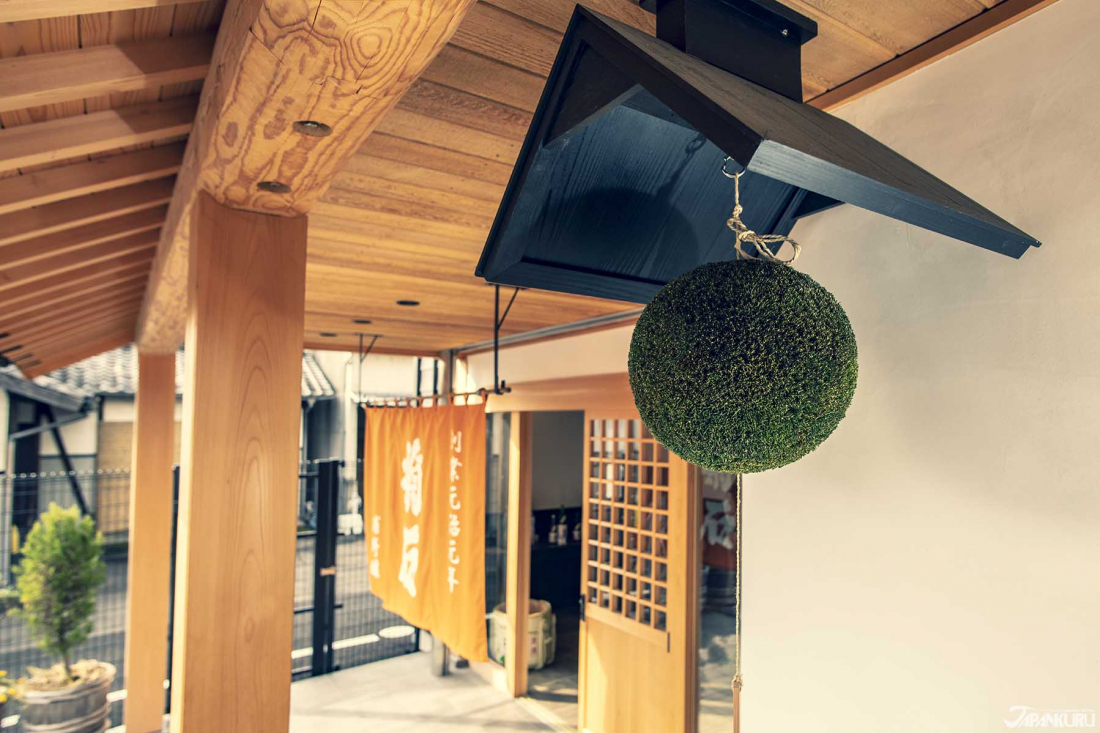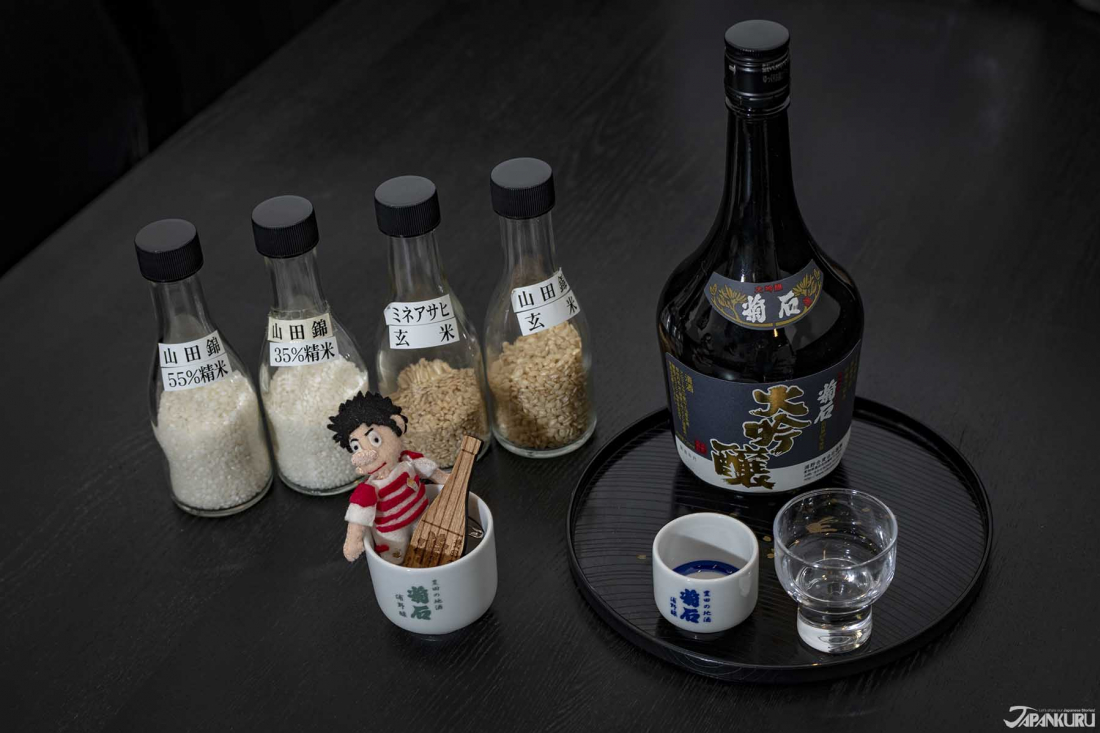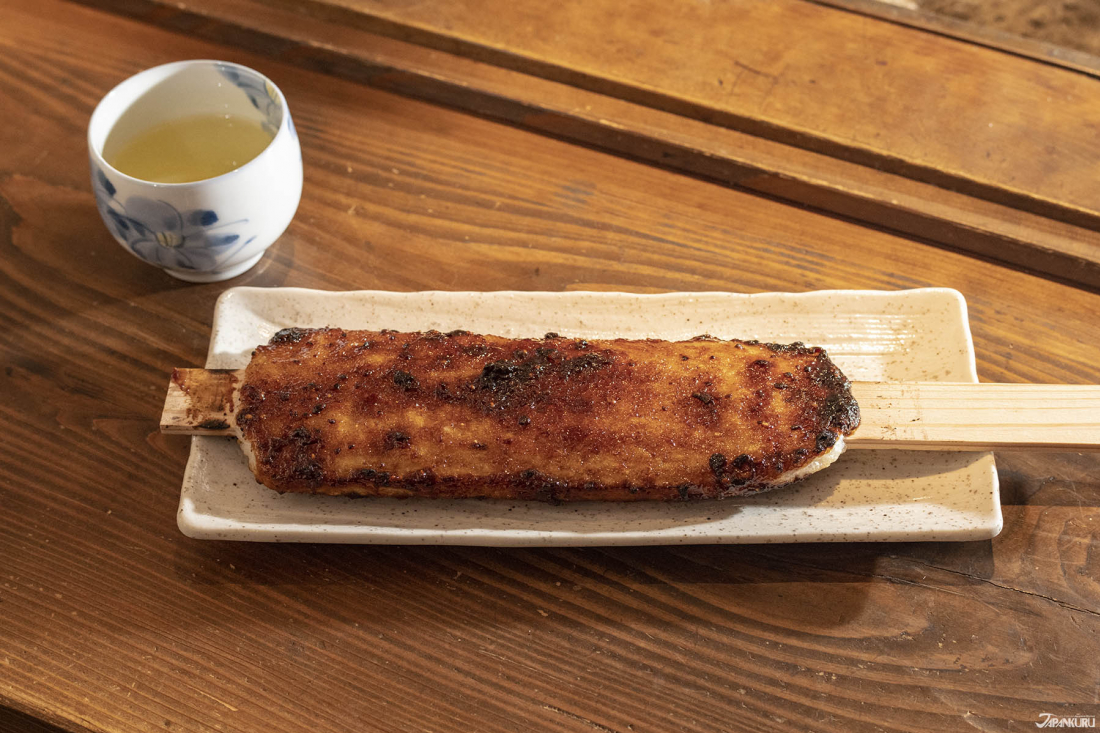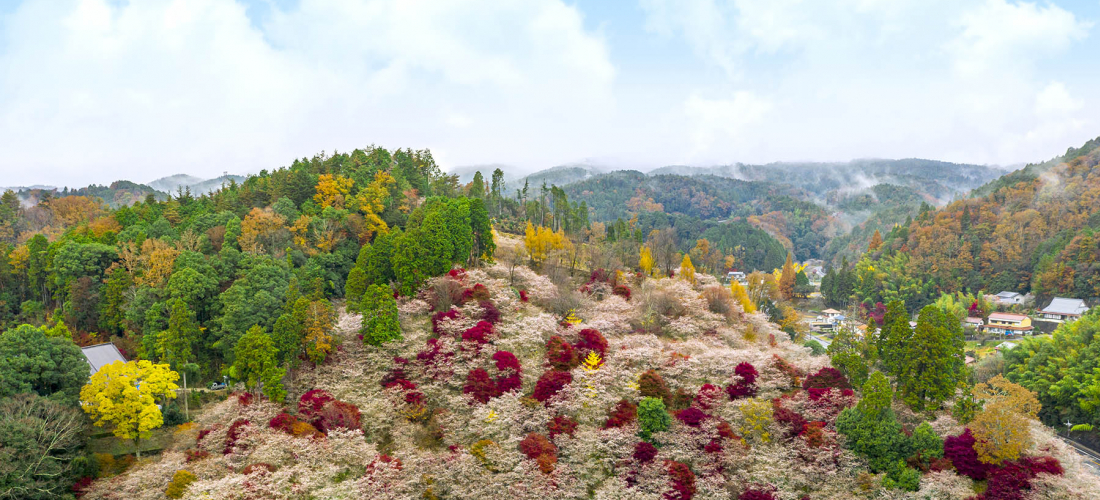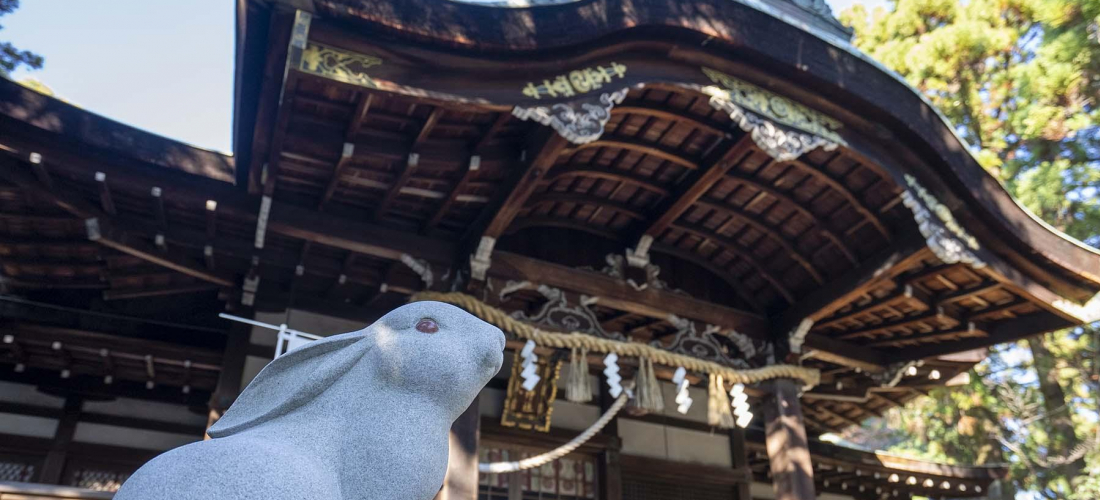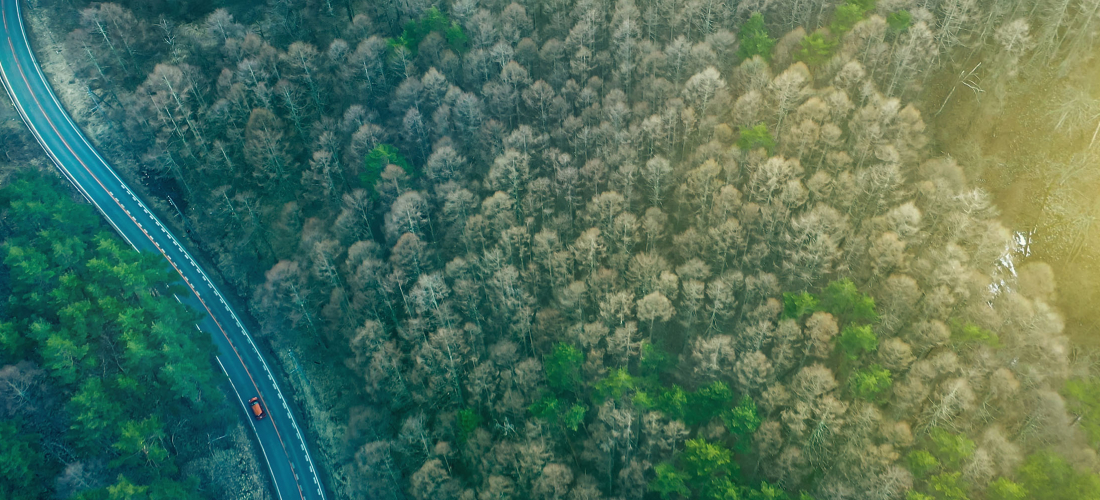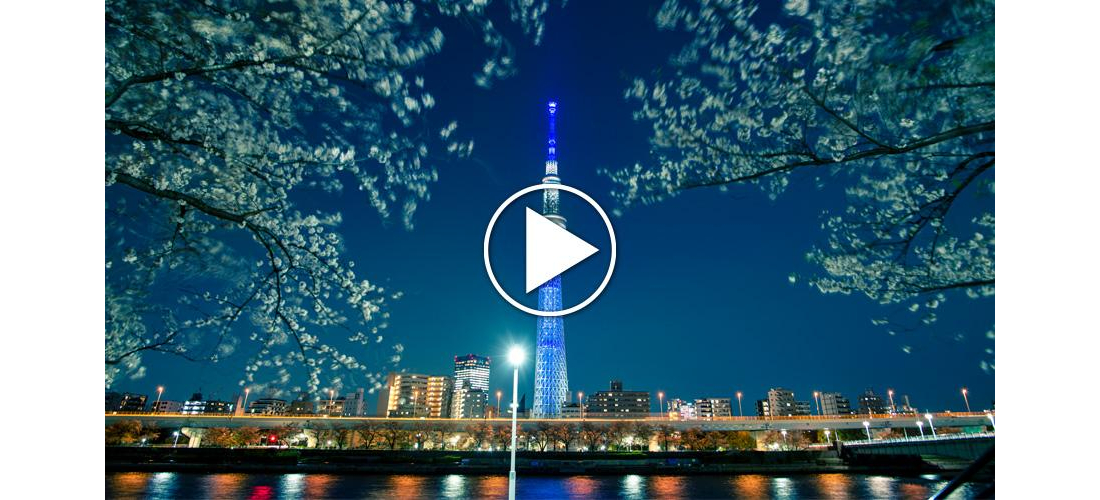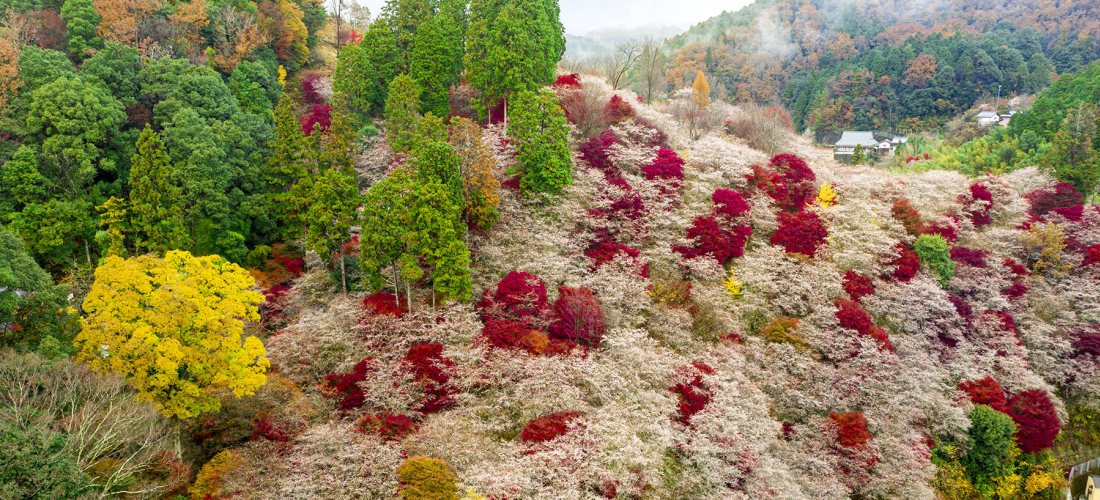
CONTENTS
Glorious autumn leaves, crisp breezes, and pink petals floating in the wind… the city of Toyota in Aichi Prefecture might bring to mind automobiles for many, but when summer ends and the weather turns cool and comfortable, you’d be hard-pressed to find a better fall destination (for a number of reasons). This city has some gorgeous views to offer, including cherry blossoms… in autumn! (A true rarity.) And the lush fall foliage of the famous Korankei Gorge spreads across the skyline, illuminated from below after sunset. Whether you’re interested in cars or not, there’s plenty of things to do in Toyota City!
Shikizakura (四季桜): Rare Autumn Cherry Blossoms
Between the elegant displays of small pink flowers found in Obara and the magnificent hills of Korankei, covered each fall in waves of red and orange foliage, Toyota City is an ideal destination during the fall. And without the crowds that are now an inherent part of going just about anywhere in some of Japan's bigger cities, it's also a great place to relax. Take in the fresh air of the great outdoors and the beauty of traditional Japan without bumping into someone every step you take!
Sakura, aka cherry blossoms, are an important symbol in Japan and a key sign of the coming spring. In late March and early April, sakura bloom across Japan as young people start the school year or a new job, and the natural world comes back to life. Then the sakura petals slowly rain down from the limbs of the trees, causing a beautiful rain of pink as the flowers disappear until the next spring.
Everywhere, that is, except Toyota.
The "shikizakura" (四季桜) of Toyota's Obara area bloom on a unique schedule – twice every year. While they do also follow the traditional pattern of spring blossoms, the very best time to see these special trees is mid to late November every year, when the pale pink of the rare flowers clashes brilliantly with the deep colors of the neighboring maple trees.
The trees are somewhat scattered throughout the Obara area, and every fall there's an official Obara Shikizakura Cherry Blossom Festival. It's held spread across the Senmi Shikizakura Village (川見四季桜の里), Kakigairi Walking Path (柿ケ入遊歩道), and Obara Fureai Park (小原ふれあい公園), where you'll find the best views of the cherry blossoms. Over 10,000 shikizakura trees grow across the mountainous area, interspersed with splashes of colorful maple leaves.
This particular cherry blossom variety was brought to the area by Genseki Fujimoto, a town doctor in the 1800s (apparently a time when you could be both of those things at once)! After being presented with an extremely rare early specimen of the tree's roots, Fujimoto brought it to Obara, and the shikizakura thrived. In fact, they do so well that one of these sakura trees has grown to over 100 years old, becoming a natural monument in the process.
Senmi Shikizakura Village (川見四季桜の里)
Hikage Area, Senmicho, Toyota, Aichi
Kakigairi Walking Path (柿ケ入遊歩道)
Kakigairi Area, Kaminigicho, Toyota, Aichi
Obara Fureai Park (小原ふれあい公園)
456 Magohachi, Obaracho, Toyota, Aichi
Official Website (en)
And while you're in Obara, don't miss out on the papermaking workshops at the Obara Paper Art Museum, Washi no Furusato (豊田市和紙のふるさと)! Not only is the Obara climate perfect for growing shikizakura, it's also ideal for kozo plants, the main ingredient when producing washi (traditional Japanese paper). Stop by to see some beautiful washi products at the washi center, and then try making it yourself! Participate in a workshop in their spacious studio, and you can make a sheet of the washi paper from scratch, before adding some decorative dyes and colorful shapes.
Obara Paper Art Museum (豊田市和紙のふるさと)
216-1 Hora Eitaro, Toyota, Aichi
Hours: 9:00 – 16:30 (closed Mondays)
Official Website (en)
Korankei (香嵐渓): Spectacular Autumn Foliage
Enjoying the Fall Weather & Blushing Leaves
While spring in Japan is colored by the flush of pink sakura, autumn is the time to enjoy the gradual shift in shade as green leaves turn yellow, orange, and red. This autumn foliage, and venturing into nature to enjoy it, is called koyo (紅葉) in Japan, and it's a yearly tradition for much of the population.
As the most popular koyo spot in the region, Korankei is a clear destination during any autumn trip to Japan. The park area is now known nation-wide for paths that wander through thousands of trees, but it actually started on a much smaller scale. The story goes that Sanei, head monk at the local Kojakuji Temple, planted the very first trees along the temple paths all the way back in 1634. The foliage has certainly expanded since then, though, as locals have helped grow the small groves of maples into more than 4,000 trees, including 11+ different varieties of maple.
The maples have spread all the way along the banks of the Tomoe River, up to another iconic symbol of Korankei is the Taigetsukyo Bridge (待月橋), a vivid red against the flowing water. Standing on the bridge gives you a great view of the surroundings, but if you're on a mission to take some great pictures, you have to get some shots with Taigetsukyo.
Once you start along the main pathways crossing the mountainside, make sure you spend some time wandering down the maple tree tunnel. This particular part of the path has dense lines of tall maple trees on both sides, creating a canopy that spreads over the path like a tunnel of red and yellow gradients. When the afternoon sun shines through the leaves and creates dappled patterns on the ground, it's quite enchanting.
If we're talking magical views, though, the light-up event put on every year during the Korankei Maple Festival is a must-see. Warm golden light shines up from the ground, illuminating the red-tinted maple leaves and turning Korankei into a fairyland from sunset to… well, 9 pm. But that gives you plenty of time to enjoy the otherworldly ambience.
Korankei Gorge (香嵐渓)
Iimori Asukecho, Toyota, Aichi
(Autumn leaves best viewed mid-November.)
Official Website (en)
Of course, there's a bit more to do than just walking around and enjoying the great outdoors along the river. For one, visitors might enjoy the chance to see Kojakuji Temple (香積寺), nestled into the Mt. Iimori mountainside. You can still walk the grounds where Sanei first worked and planted the maples that now fill Korankei Gorge. And the building does, of course, look lovely in contrast with the surrounding fall foliage.
Kojakuji Temple (香積寺)
Iimori-39 Asukecho, Toyota, Aichi
For some more old-fashioned fun, Korankei is also where you'll find the Sanshu Asuke Yashiki Village (三州足助屋敷), a sort of open-air museum and workshop center, where visitors can get a little taste of traditional Japanese village life. The circle of low buildings, built around a recreation of a wealthy farmer's mansion, hosts artisans who both produce beautiful traditional items for sale, and also teach workshops so you can make things yourself. Try your hand at Japanese aizome (藍染) indigo dyeing and maybe some weaving for a more relaxing experience, or do what we did: give your arms a workout at the blacksmith!
During our workshop we used traditional Japanese carpentry nails as a base to make letter openers, pounding and pounding against the heated metal to produce a shapely blade. We were all pretty happy with our results!
Sanshu Asuke Yashiki Village (三州足助屋敷)
Iimori-36, Asukecho, Toyota, Aichi
Hours: 9:00 – 17:00
Admission: Adults 300 yen / Children 100 yen
Workshop Details (jp)
(↑Japanese web page, but google translate will give you a pretty good idea!)
Further Information (en)
During the koyo season, a visit to Korankei can easily turn into a whole day out, but growling stomachs shouldn't be too much of a worry – there's plenty around to snack on! If you arrive at Korankei and you're already hungry, a variety of shops and stalls line the path from the main road, many of which sell tasty Japanese street food of all kinds. Visitors in Toyota during the Maple Festival, however, will probably want to head to the Ban Ban-kan food market open for the event, across from Sanshu Asuke Yashiki Village! The busy market is full of stalls selling everything from sweet mugwort mochi to savory roast sausages, and nearby you'll find a stall selling toshomen noodles (刀削麺), a special variety that are cut instead of stretched. The hot noodle soup warms you right up in the cool weather, making for a satisfying picnic lunch.
For a more relaxed atmosphere, you'll find Cafe Katakago in the same area. We were quite happy with the matcha brownie and the seasonal sweet potato cake we nibbled on, and they both went nicely with the cafe's specialty fresh-roasted coffee. And we haven't even gotten to the best part of this cafe: the riverside terrace! Rain or shine, the outdoor seating offers a gorgeous view of the autumn leaves and the rushing river water, making it the perfect place to sit down and enjoy the atmosphere.
Cafe Katakago (喫茶店 堅香子)
Iimori-36, Asukecho, Toyota, Aichi
Hours: 9:00 – 16:30 (closed Thursdays, except during the Maple Festival)
Exploring the Asuke Area
While Korankei is quite famous, it's not the only thing the surrounding area of Asuke has to offer. Take a stroll outside of the Korankei Gorge for a better idea!
The historic Asuke townscape found on the northern edge of Korankei is worth looking around, even if just for a short while. Thanks to its history as a merchant town that prospered along the Ina Kaido (a major Edo era highway), Asuke is still generously scattered with old-fashioned homes and lovely architecture. There are a number of houses still standing that were built all the way back in the late 18th and early 19th century, giving visitors a unique look at central Japanese life, hundreds of years ago.
One of the most scenic spots in this part of Asuke is Manrin Alley (マンリン小路), a narrow path that winds its way between the outer walls of a number of traditional homes. The dark wood and bright plaster of the architecture makes the picturesque alley look like something out of a movie scene. (Visitors might also like the quaint Manrin Bookstore & Cafe found at the start of the path!)
Manrin Alley (マンリン小路)
Shinmachi-2 Asukecho, Toyota, Aichi
A little to the west of the Asuke townscape is the Asuke Hachimangu Shrine, which might look lovely but unassuming at first glance. Take a closer look, though, and you might start to notice a theme… put simply: feet! Since Asuke historically functioned as an important post along the busy Ina Kaido road, travelers often stopped in to take respite and rest their weary feet. As these Edo era travelers came to the shrine to pray for healthy feet, to keep them steady as they continued on their way down the long road, Asuke Hachimangu became associated with foot health in general. Nowadays, there are large straw sandals hung on the wall of the shrine (far too large for anybody to try on, but similar to the ones travelers might have worn hundreds of years ago), and ema votive tablets made in the shape of feet! If your soles are getting a little achy after a long day exploring Korankei and Asuke, stop into the shrine before heading home, for a healing prayer!
Asuke Hachimangu Shrine (足助八幡宮)
Miyanoato-12, Asukecho, Toyota, Aichi
This horse statue was built to honor a horse that is said to have once been sacrificed at Asuke’s Fall Festival.
Toyota’s Other Standout Destinations
Toyota's gorgeous Shikizakura blooms and the majesty of Korankei might be something to behold, but you didn't think that was all the city had to offer, did you? (Again, we're not just talking about the cars!) Important Japanese history and even more ways to enjoy the great outdoors – Toyota's pretty interesting year-round.
Matsudaira Toshogu Shrine (松平東照宮) & the Matsudairago Area (松平郷)
Even if you're into Japanese history, the name "Matsudaira" might not be immediately recognizable to you. The Matsudaira clan was once a powerful family that held control of Toyota and the local region, and clan founder Matsudaira Chikauji produced a long line of powerful leaders. In fact, one of those descendants might be a little more familiar to Japanese history buffs: Tokugawa Ieyasu, one of the three unifiers of Japan and founder of the Tokugawa shogunate (the government which ruled over Japan for more than 250 years, starting in 1600).
Matsudairago is a historical park, full of sites associated with the clan. While the streets of Asuke give you a little look at everyday life in historic Japan, Matsudairago offers a different viewpoint. One of the sites in the area is the Matsudaira Toshogu Shrine, dedicated to both Matsudaira Chikauji and Tokugawa Ieyasu.
You can catch a glimpse from outside, but enter into the main shrine building for a better look at the sumptuous collection of 108 paintings on the ceiling. Each individual section displays a different plant native to the area! Check out the sign for a guide to exactly what variety of local flora each traditional illustration represents.
Matsudaira Toshogu Shrine (松平東照宮)
Matsudairacho, Toyota, Aichi
Staffed Hours: 9:00 – 15:00
Official Shrine Page (jp)
Further Information (en)
Also on the shrine grounds, the Ubuyu no Ido well (産湯の井戸) is worth going to see in and of itself. Not only is the ancient well beautiful, but the well water was historically used to bathe newborn babies of the Matsudaira clan, with the promise of granting them long lives. Of course, among those many newborns was Tokugawa Ieyasu himself!
Otaki Gorge (王滝渓谷)
This gorge is known as a fun place for outdoor activities of all kinds. Take a quick hike over the bridge and into the woods, or make some reservations and get a little wet going caving! You can even rent the barbeque area for a full day out under the clear blue sky.
The massive mossy boulders and craggy cliffs that shape the local creeks look so artfully placed that the area is known for looking like something out of a Ghibli film. When we visited the afternoon light filtered through the treetops, lighting up the shady enclaves, and it did seem like Princess Mononoke might step out of the shadows at any moment (or perhaps a Laputian robot soldier might appear among the rocks).
Otaki Gorge (王滝渓谷)
Tsuhayaki-29, Toyomatsucho, Toyota, Aichi
Further Details (en)
Black Water Shower Caving (TRIPPER)
Barbeque Facility Dates: weekends April ~ November/every day in August
Barbeque Reservations: +81 0565-58-1862
Radon Onsen Hot Springs (ラドン温泉)
The words "radon" or "radioactive" might set off alarm bells in the heads of many English-speakers, but in Japan these extremely weakly radioactive hot springs are sought out as a special destination by many hot spring lovers across the country. Staff will assure you that even when the radon is absorbed by your body, it's quickly processed and expelled, "leaving only the parts that are good for your body," as they say. Apparently this encourages a hormesis response, helping the body heal and repair. Whether this is entirely accurate or not, the radon bath we took at Jurakuso Onsen was certainly relaxing and refreshing. (And if you're still worried, there are plenty of non-radon baths to luxuriate in within the Toyota area as well!)
Jurakuso no Yu Onsen (寿楽荘の湯)
722 Higashida, Hirahatacho, Toyota, Aichi
Hours: 10:30 – 15:00 (Extended hours available for an extra fee.)
Fee: 800 yen
Further Information (en)
A Taste of Toyota (Literally)
Japanese Sake
What we call "sake" Japan usually refers to as "nihonshu" (日本酒), quite literally "Japanese sake". And Toyota has some great destination for nihonshu lovers from all over the world. After arriving in Toyota, we eagerly headed towards Urano Sake Brewery (浦野酒造) to get a little taste of the local brew. Urano has been making sake using traditional methods since 1864, and is now famous for their seishu kikuishi daiginjo sake, which has even won a gold prize at the Annual Japan Sake Awards. The brewery is also in a historic building, surrounded by lovely architecture and actually right up against a small part of the Edo-era Iida Kaido road.
The very friendly staff taught us all about sake during our visit, and even explained some cultural peculiarities, like the "sugidama" (杉玉) hanging outside. Apparently this cedar ball is traditionally hung up when it's fresh and green, signaling that the brewery has produced a new batch of sake. If the cedar has turned totally brown by the time you arrive, you'll know that the season's sake has properly aged, and is ready to drink!
We had a special chance to tour the inner workings of the brewery itself, and were fascinated to see the huge vats of sake-in-the-making. We could even hear the soft bubbling noises of fermentation in action! But the most exciting part was a chance to try the sake itself. A corner of the brewery is set aside so that visitors can sit down for a little tasting. As we tried the different varieties, they told us how part of what distinguishes different grades of sake is how much the rice is first polished. Each grain of the special rice used to make their daiginjo (大吟醸) sake is first milled down to only 35% of its original size!
Urano Sake Brewery (浦野酒造)
48 Shitagoya, Shigocho, Toyota, Aichi
Hours: Weekdays 9:00 – 18:00/Saturdays 10:00 – 15:00 (closed Sundays & holidays)
Further Details (en)
Goheimochi (五平餅)
Regional ingredients and dishes are a major part of travel in Japan, so don't miss the chance to sample a popular local treat: goheimochi! Like the name suggests, this snack does share some similarities with the Japanese mochi many people are familiar with. However, goheimochi is made with normal white rice, giving it less extreme stretch, and more of a satisfyingly firm, chewy bite. Goheimochi is also made with a special savory sauce, painted on as the goheimochi grills. The miso-based sauce gives the simple rice a salty-and-sweet punch of umami! You can pick up some goheimochi at the seasonal food market in Korankei if you want, but to be suitably blown away by the flavor, we recommend you drive into the mountains and find a restaurant that really makes it properly. We stopped by a place called Koshikake Sanso for ours, on the way to get a look at the lovely Mikawa Lake nearby.
Koshikake Sanso (腰掛山荘)
Koshikake-17-10 Habucho, Toyota, Aichi
(closed Wednesdays)
Further Details (en)
See You Again Next Fall, Toyota!
A beautiful city to visit year-round, Toyota bursts into color every fall, and there's nowhere better to visit when the weather starts to cool. Whether you love the beauty of sakura and wish you could see them all the time, or you're hoping to participate in some of Japan's best koyo, as an autumn destination, we couldn't recommend Toyota more! Korankei and its tree-lined paths, Obara's rare fall-blooming cherry blossoms, traditional workshops, historical attractions, and some really tasty treats – there's so much to enjoy! So start making your plans for next fall ASAP, and make sure to pencil in a few days in this lovely part of Aichi!
Been to Toyota City recently? Stopped into Aichi Prefecture? Making some plans to visit soon? Share your experience with us and let us know about your upcoming plans on twitter, instagram, and facebook!
For more information on Toyota City sightseeing, take a look at the links below! They’ve got all the details on how to find, and how to best enjoy, spots all over the city.
Tourism Toyota’s Official Instagram
Tourism Toyota’s Official Facebook
COMMENT
FEATURED MEDIA
VIEW MORE 
A New Tokyo Animal Destination: Relax & Learn About the World’s Animals in Japan
#pr #japankuru #anitouch #anitouchtokyodome #capybara #capybaracafe #animalcafe #tokyotrip #japantrip #카피바라 #애니터치 #아이와가볼만한곳 #도쿄여행 #가족여행 #東京旅遊 #東京親子景點 #日本動物互動體驗 #水豚泡澡 #東京巨蛋城 #เที่ยวญี่ปุ่น2025 #ที่เที่ยวครอบครัว #สวนสัตว์ในร่ม #TokyoDomeCity #anitouchtokyodome

Shohei Ohtani Collab Developed Products & Other Japanese Drugstore Recommendations From Kowa
#pr #japankuru
#kowa #syncronkowa #japanshopping #preworkout #postworkout #tokyoshopping #japantrip #일본쇼핑 #일본이온음료 #오타니 #오타니쇼헤이 #코와 #興和 #日本必買 #日本旅遊 #運動補充能量 #運動飲品 #ช้อปปิ้งญี่ปุ่น #เครื่องดื่มออกกำลังกาย #นักกีฬา #ผลิตภัณฑ์ญี่ปุ่น #อาหารเสริมญี่ปุ่น

도쿄 근교 당일치기 여행 추천! 작은 에도라 불리는 ‘가와고에’
세이부 ‘가와고에 패스(디지털)’ 하나면 편리하게 이동 + 가성비까지 완벽하게! 필름카메라 감성 가득한 레트로 거리 길거리 먹방부터 귀여움 끝판왕 핫플&포토 스폿까지 총집합!
Looking for day trips from Tokyo? Try Kawagoe, AKA Little Edo!
Use the SEIBU KAWAGOE PASS (Digital) for easy, affordable transportation!
Check out the historic streets of Kawagoe for some great street food and plenty of picturesque retro photo ops.
#pr #japankuru #도쿄근교여행 #가와고에 #가와고에패스 #세이부패스 #기모노체험 #가와고에여행 #도쿄여행코스 #도쿄근교당일치기 #세이부가와고에패스
#tokyotrip #kawagoe #tokyodaytrip #seibukawagoepass #kimono #japantrip

Hirakata Park, Osaka: Enjoy the Classic Japanese Theme Park Experience!
#pr #japankuru #hirakatapark #amusementpark #japantrip #osakatrip #familytrip #rollercoaster #retrôvibes #枚方公園 #大阪旅遊 #關西私房景點 #日本親子旅行 #日本遊樂園 #木造雲霄飛車 #히라카타파크 #สวนสนุกฮิราคาตะพาร์ค

🍵Love Matcha? Upgrade Your Matcha Experience With Tsujiri!
・160년 전통 일본 말차 브랜드 츠지리에서 말차 덕후들이 픽한 인기템만 골라봤어요
・抹茶控的天堂!甜點、餅乾、飲品一次滿足,連伴手禮都幫你列好清單了
・ส่องมัทฉะสุดฮิต พร้อมพาเที่ยวร้านดังในอุจิ เกียวโต
#pr #japankuru #matcha #matchalover #uji #kyoto #japantrip #ujimatcha #matchalatte #matchasweets #tsujiri #말차 #말차덕후 #츠지리 #교토여행 #말차라떼 #辻利抹茶 #抹茶控 #日本抹茶 #宇治 #宇治抹茶 #日本伴手禮 #抹茶拿鐵 #抹茶甜點 #มัทฉะ #ของฝากญี่ปุ่น #ชาเขียวญี่ปุ่น #ซึจิริ #เกียวโต

・What Is Nenaito? And How Does This Sleep Care Supplement Work?
・你的睡眠保健品——認識「睡眠茶氨酸錠」
・수면 케어 서플리먼트 ‘네나이토’란?
・ผลิตภัณฑ์เสริมอาหารดูแลการนอน “Nenaito(ネナイト)” คืออะไร?
#pr #japankuru #sleepcare #japanshopping #nenaito #sleepsupplement #asahi #睡眠茶氨酸錠 #睡眠保健 #朝日 #l茶胺酸 #日本藥妝 #日本必買 #일본쇼핑 #수면 #건강하자 #네나이토 #일본영양제 #อาหารเสริมญี่ปุ่น #ช้อปปิ้งญี่ปุ่น #ร้านขายยาญี่ปุ่น #ดูแลตัวเองก่อนนอน #อาซาฮิ

Japanese Drugstore Must-Buys! Essential Items from Hisamitsu® Pharmaceutical
#PR #japankuru #hisamitsu #salonpas #feitas #hisamitsupharmaceutical #japanshopping #tokyoshopping #traveltips #japanhaul #japantrip #japantravel

Whether you grew up with Dragon Ball or you just fell in love with Dragon Ball DAIMA, you'll like the newest JINS collab. Shop this limited-edition Dragon Ball accessory collection to find some of the best Dragon Ball merchandise in Japan!
>> Find out more at Japankuru.com! (link in bio)
#japankuru #dragonball #dragonballdaima #animecollab #japanshopping #jins #japaneseglasses #japantravel #animemerch #pr

This month, Japankuru teamed up with @official_korekoko to invite three influencers (originally from Thailand, China, and Taiwan) on a trip to Yokohama. Check out the article (in Chinese) on Japankuru.com for all of their travel tips and photography hints - and look forward to more cool collaborations coming soon!
【橫濱夜散策 x 教你怎麼拍出網美照 📸✨】
每次來日本玩,是不是都會先找旅日網紅的推薦清單?
這次,我們邀請擁有日本豐富旅遊經驗的🇹🇭泰國、🇨🇳中國、🇹🇼台灣網紅,帶你走進夜晚的橫濱!從玩樂路線到拍照技巧,教你怎麼拍出最美的夜景照。那些熟悉的景點,換個視角說不定會有新發現~快跟他們一起出發吧!
#japankuru #橫濱紅磚倉庫 #汽車道 #中華街 #yokohama #japankuru #橫濱紅磚倉庫 #汽車道 #中華街 #yokohama #yokohamaredbrickwarehouse #yokohamachinatown

If you’re a fan of Vivienne Westwood's Japanese designs, and you’re looking forward to shopping in Harajuku this summer, we’ve got important news for you. Vivienne Westwood RED LABEL Laforet Harajuku is now closed for renovations - but the grand reopening is scheduled for July!
>> Find out more at Japankuru.com! (link in bio)
#japankuru #viviennewestwood #harajuku #omotesando #viviennewestwoodredlabel #viviennewestwoodjapan #비비안웨스트우드 #오모테산도 #하라주쿠 #日本購物 #薇薇安魏斯伍德 #日本時尚 #原宿 #表參道 #japantrip #japanshopping #pr

Ready to see TeamLab in Kyoto!? At TeamLab Biovortex Kyoto, the collective is taking their acclaimed immersive art and bringing it to Japan's ancient capital. We can't wait to see it for ourselves this autumn!
>> Find out more at Japankuru.com! (link in bio)
#japankuru #teamlab #teamlabbiovortex #kyoto #kyototrip #japantravel #artnews
Photos courtesy of teamLab, Exhibition view of teamLab Biovortex Kyoto, 2025, Kyoto ® teamLab, courtesy Pace Gallery

Japanese Makeup Shopping • A Trip to Kamakura & Enoshima With Canmake’s Cool-Toned Summer Makeup
#pr #canmake #enoshima #enoden #에노시마 #캔메이크 #japanesemakeup #japanesecosmetics

⚔️The Robot Restaurant is gone, but the Samurai Restaurant is here to take its place. Check it out, and don't forget your coupon!
🍣신주쿠의 명소 로봇 레스토랑이 사무라이 레스토랑으로 부활! 절찬 쿠폰 발급중
💃18歲以上才能入場的歌舞秀,和你想的不一樣!拿好優惠券去看看~
#tokyo #shinjuku #samurairestaurant #robotrestaurant #tokyotrip #도쿄여행 #신주쿠 #사무라이레스토랑 #이색체험 #할인이벤트 #歌舞伎町 #東京景點 #武士餐廳 #日本表演 #日本文化體驗 #japankuru #japantrip #japantravel #japanlovers #japan_of_insta

Japanese appliance & electronics shopping with our KOJIMA x BicCamera coupon!
用JAPANKURU的KOJIMA x BicCamera優惠券買這些正好❤️
코지마 x 빅 카메라 쿠폰으로 일본 가전 제품 쇼핑하기
#pr #japankuru #japanshopping #kojima #biccamera #japaneseskincare #yaman #dji #osmopocket3 #skincaredevice #日本購物 #美容儀 #相機 #雅萌 #日本家電 #일본여행 #면세 #여행꿀팁 #일본쇼핑리스트 #쿠폰 #일본쇼핑 #일본브랜드 #할인 #코지마 #빅카메라 #japankurucoupon

